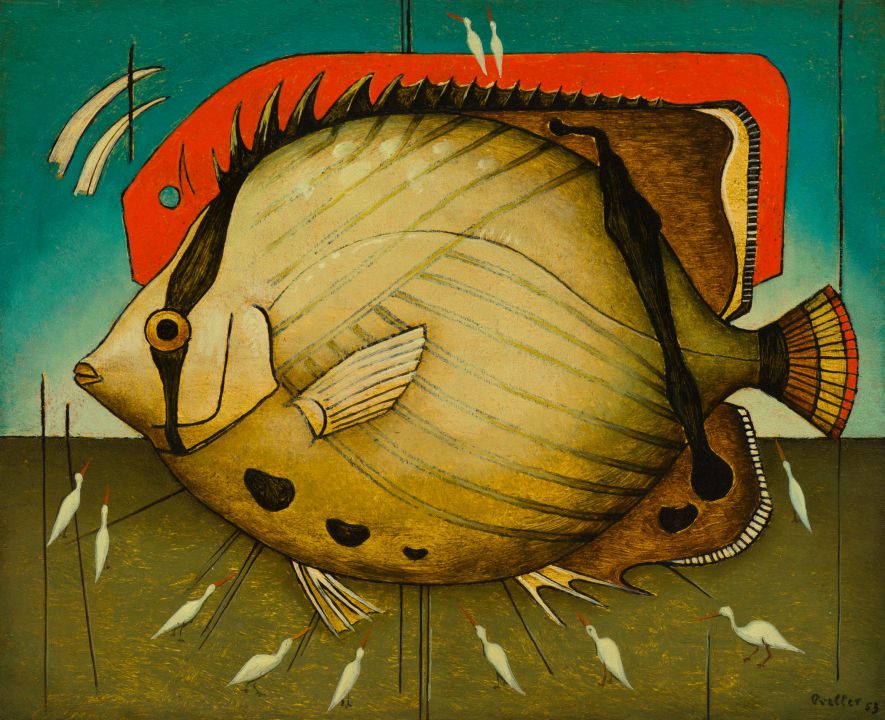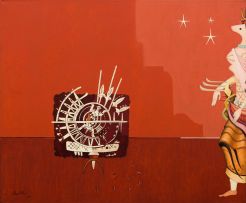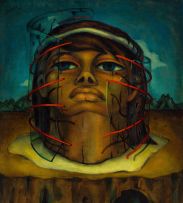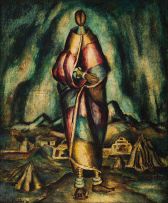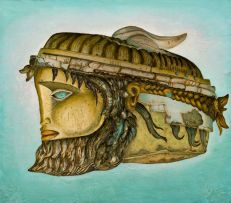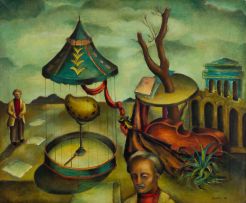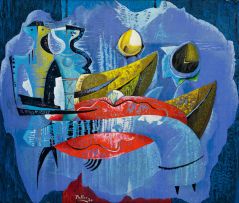Important South African and International Art
Live Auction, 4 June 2018
Session Three
Incl. Buyer's Premium & VAT
About this Item
signed and dated 53
Notes
Alexis Preller's stylised The Fish of 1953 is highly emblematic and of great beauty. The contour-like demarcations and very precise linear quality of the fins relate in some ways to Preller's Mozartian Fish of 1952. In Mozartian Fish Preller focuses on a more tonal range in the rendition of the fish compared to the subdued colours of the present work, which is set against the rich aquatic tones above the horizon.
In the Mozartian Fish Preller alludes to the cello and the vibrations that move beyond the fish. Poetically he shifts the symbolic relationship of the fish and the cello, eliding them into one exquisite symbolic entity. In The Fish Preller does something very different as he presents the iconic beauty of the fish as almost flat with a bull's eye-like circular representation for the eye, a device he uses in many of his paintings to amplify the presence of a totemic being.
During Preller's stay in the Seychelles between 1948 and 1949, he revelled in the infinite variety of colour, shapes and forms in and around the islands and produced a number of small studies of local species of fish, birds, plants and fruit. His interest in the decorative properties of these tropical fish had been aroused by the wondrous sights off the coral reefs of Mahé Island. He was captivated by the rainbow hues and harmonies of the shoals of exotic fish, and these play their way through a series of his paintings. After his return from the Seychelles, he painted Fishermen of Beau Vallon, 1949, in which we see fish floating within the landscape itself, out of water as exquisite creatures liberated from the oceans.
In the 1953 painting the fish is made monumental by the horizon line above which it floats. In the sky one sees lines with arcs that seem to streak their way like shooting stars or as emblematic spatial markers. Preller creates the fish as a power animal reminiscent of his earlier Ritual Bull or Herd Boy of 1949. In both instances the bull, like the fish, is surrounded by egrets that in some way act as emblematic indicators of the status of these creatures and validate their totemic significance. The fish is also the source of the qualities that appear in The Gateway of 1949 where one of the heads has a fish-like eye, a circular eye that is not human, and one observes how Preller is able to 'migrate' characteristics from one being to another, even to that of the human figure itself.
As the bull represents the power animal of the southern African region, so the fish inevitably becomes the sacred and symbolic emblem of the Seychelles. Preller delves into the symbolic nature of the animal world and how this relates to the human psyche as he explores how in many cultures the highly revered animal becomes deeply associated with the consciousness of human beings.
Karel Nel and Marion Dixon
